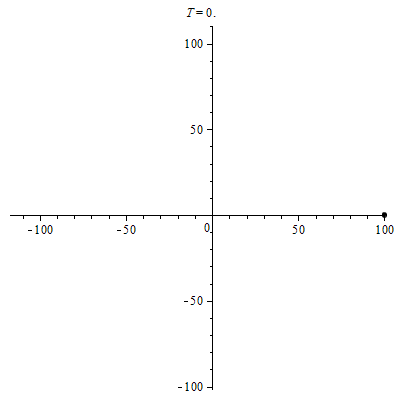

An exaggerated Poynting-Robertson effect orbit compared to a circular orbit in the relativistic gravitational field of a point mass M. Circular radius of 100 M.
Due to the outward radiation pressure on the orbiting test particle, the net inward radial force is slightly less that gravity alone so in an initially circular gravitational orbit, the test particle initially increases its radius slightly. However, due to the azimuthal radiation drag on the orbit due essentially to the aberration effect (which makes it appear that in the particle rest frame, the radiation is incident from a slightly forward direction, but is then isotropically radiated outward as it cools, resulting in a next azimuthal deceleration), the partical loses energy and gradually spirals into the center.